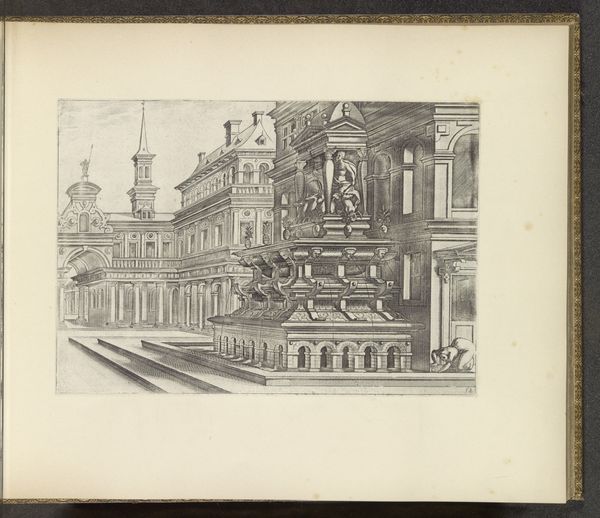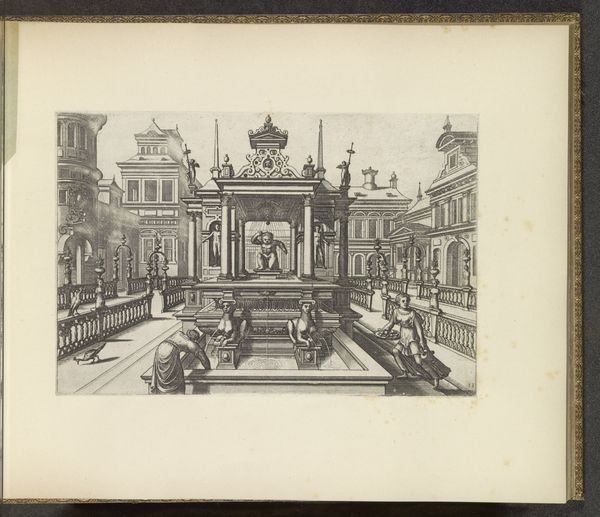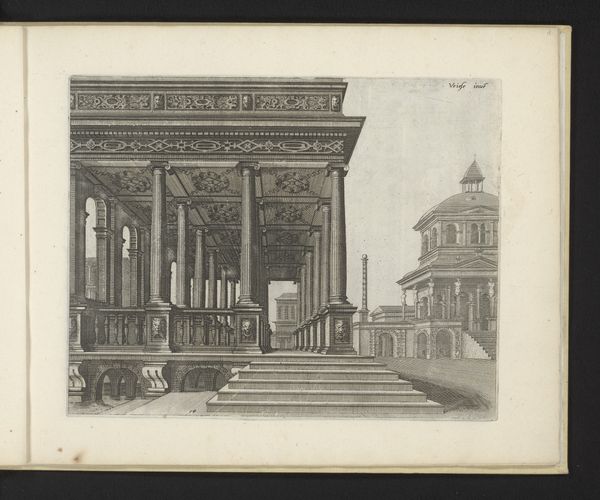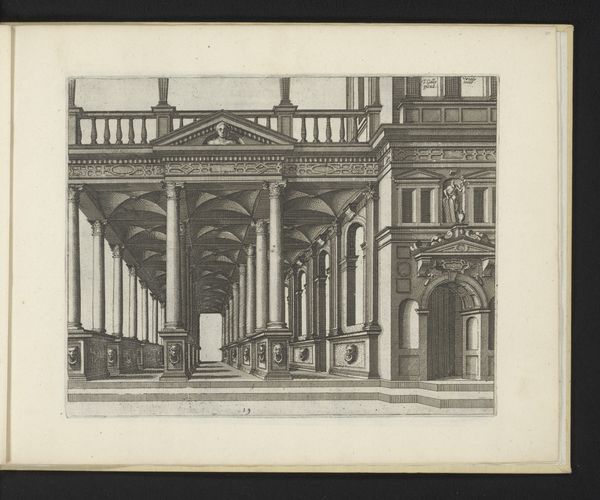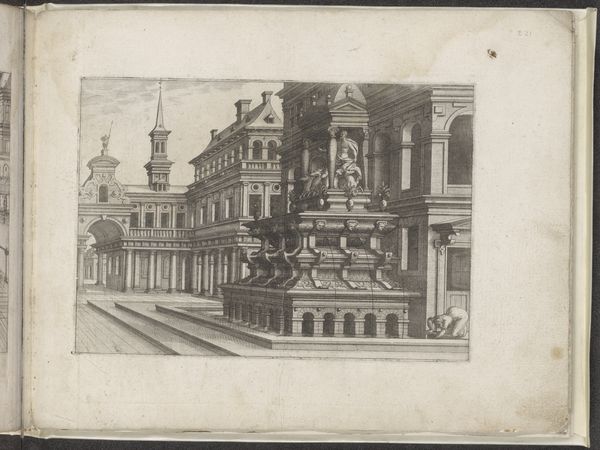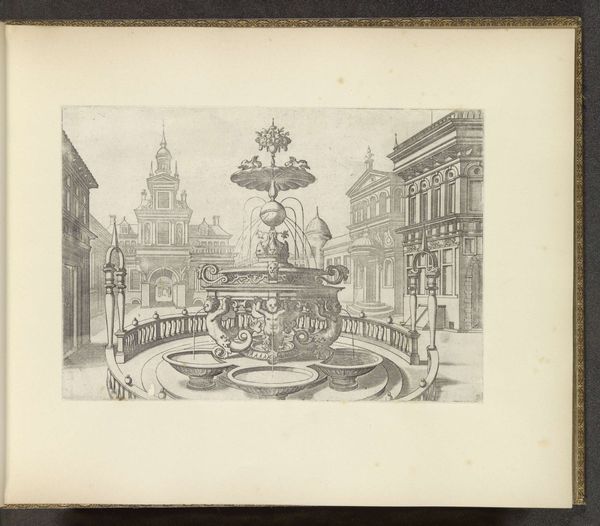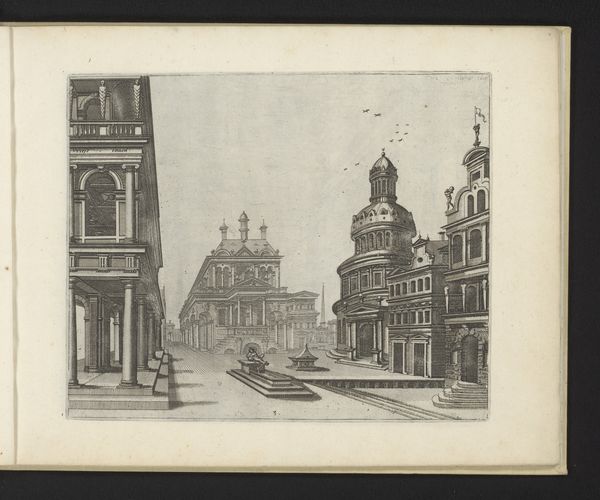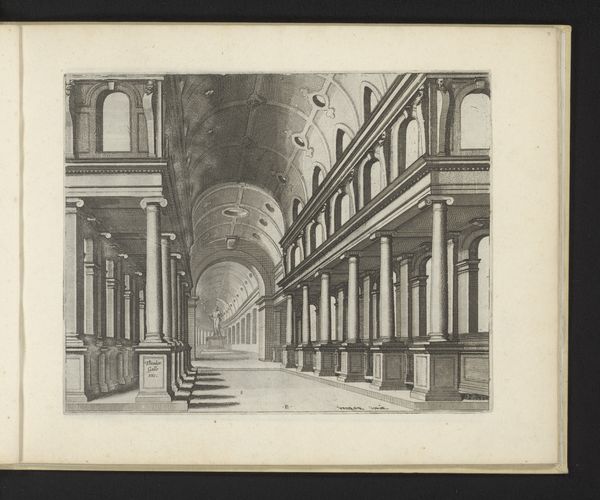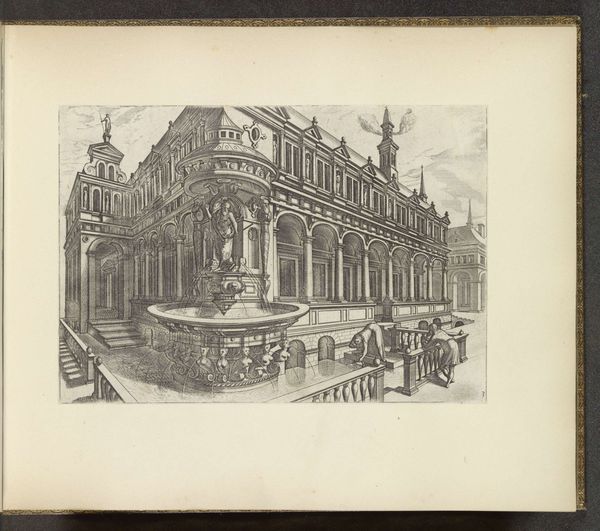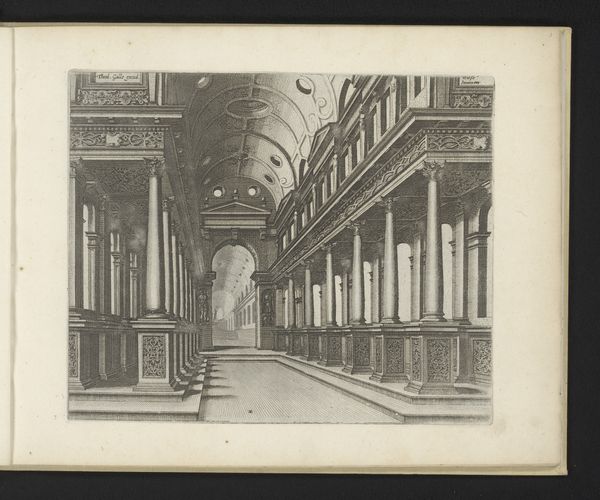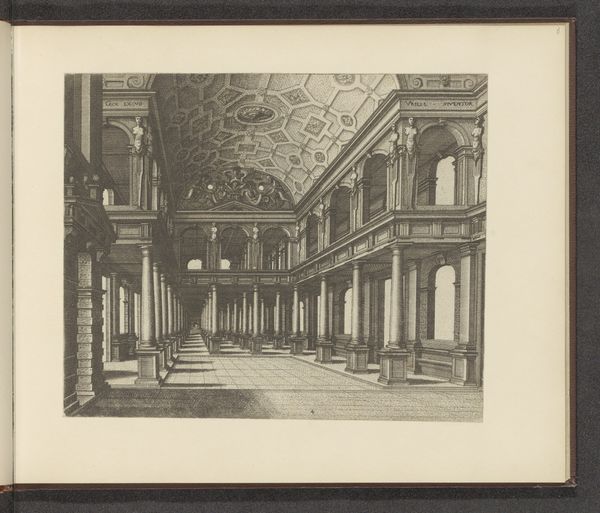
drawing, print, etching, paper, engraving, architecture
#
drawing
#
baroque
# print
#
etching
#
landscape
#
paper
#
engraving
#
architecture
Dimensions: height 207 mm, width 257 mm
Copyright: Rijks Museum: Open Domain
Curator: Immediately striking; there’s a precision to this architectural rendering, almost an austerity, despite its evident grandeur. Editor: Indeed. What we have here is an etching and engraving titled “Hof met een fontein in een rechthoekig bassin,” or "Courtyard with a Fountain in a Rectangular Basin", dating back to 1601. It is attributed to Johannes or Lucas van Doetechum. This work offers a glimpse into the ideals of architectural spaces during that era. The piece currently resides in the Rijksmuseum. Curator: That controlled perspective, receding into the distance...it creates a feeling of almost infinite space. The formal garden with the fountain at the center is a strong focal point. And it’s the interplay between the dark and light lines defining the architectural features which emphasizes depth and form. Editor: Absolutely. The architecture itself speaks volumes about the society that valued such spaces. Courtyards like these were symbols of wealth, power, and social control, existing as much more than mere open areas. Think of their function as theaters for social rituals, for displaying status, for enforcing social hierarchies… Curator: The placement of the sculptures along the upper levels…notice how they echo the human form reflected in the fountain. There is almost a game here about the idealized self and an implied invitation of what such status means for the implied patron within the image. Editor: And beyond the mere artistic interpretation, the very act of producing such a print served a crucial function. Prints allowed the circulation of architectural designs, contributing to the spread of certain styles and, implicitly, certain values. These prints helped disseminate a specific vision of what a desirable living space could, and should, look like. Curator: Ultimately it’s that sharp contrast that makes it a captivating image— a serene beauty, yet slightly cold and imposing due to its scale. Editor: It encapsulates the way art and architecture reflect the values and power structures of their time. Thank you for helping me see a clearer way to view not just the art itself, but what surrounds its production.
Comments
No comments
Be the first to comment and join the conversation on the ultimate creative platform.
